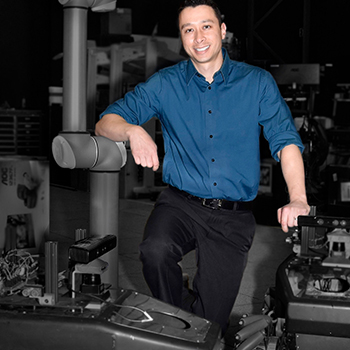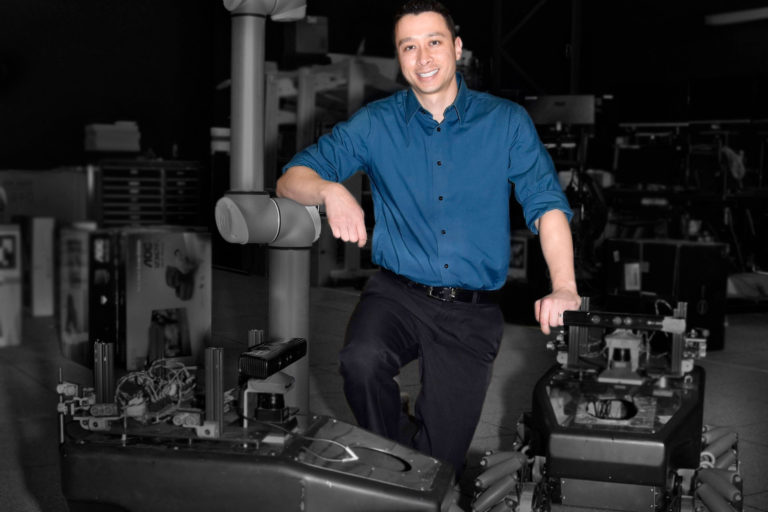
James Hing, 39
BS/MS/PhD mechanical engineering ’03, ’06, ’10
Strategic technologies branch head, Naval Air Systems Command
A Roboticist Enabling Safer Warcraft
Three-time College of Engineering grad James Hing is developing autonomous equipment to assist sailors with dangerous tasks onboard U.S. aircraft carriers.
When James Hing received notice last summer that he was invited to the White House, he was in disbelief at first.
“I stared at my name on the White House press release for quite some time, trying to convince myself that it wasn’t a typo or mistake,” recalls Hing, who is currently the branch head for the Naval Air Warfare Center Aircraft Division’s Strategic Technologies, a research and development branch of the U.S. Navy.
At the White House ceremony in July, he was awarded a Presidential Early Career Award for Scientists and Engineers.
The prestigious annual award honors outstanding scientists and engineers who show exceptional potential for leadership at the frontiers of scientific knowledge. He was cited for his 2015 research when he was leading the Robotics and Intelligent Systems Engineering (RISE) Lab for the Naval Air Warfare Center Aircraft Division.
In the RISE Lab he researched image processing, sensor fusion and control of robotic systems in realistic Navy and Marine environments, such as those with poor optics or with electromagnetic interference.
Much of his work centered around creating machines that can automate some of the most dangerous tasks aboard an aircraft carrier.
He says work aboard a carrier can be likened to a “chaotic ballet,” filled with the noise and action of planes, equipment and sailors aboard a deck that is constantly pitching and rolling with the sea, in an area roughly the size of three football fields. Jet blast, noxious gases from fumes, close proximity to propellers, bright lights, all-weather conditions, and extreme temperatures add to the challenges.
“It is easy to understand why we are motivated to develop robotic systems that can operate on the carrier deck, rather than sailors,” he says.
The Presidential award also commended him for his mentorship of current and future generations of engineers — something he continues to do today in his current role at the Naval Air Warfare Center Aircraft Division.
“We have many projects that I think would be interesting to Drexel MEM students,” says Hing, referring the Department of Mechanical Engineering and Mechanics at Drexel where he completed his bachelor’s, master’s and doctoral degrees. “I strongly urge them to reach out to me for tours and also for potential co-op positions. In five years, I believe our group will be one of the most influential and impactful research and development groups for the Navy.” — Wendy Plump


